We have been working on developing a research method that uses a hardware and software system to assess foot condition. The work was carried out in three phases: Phase 1 involved the development of a hardware-software system for analyzing the anatomical and functional condition of children's feet. In phase 2, children of different age groups as well as university students were examined. In phase 3, a treatment program based on 18 foot condition options was developed and implemented. A consent protocol was completed for each child and adult and approved by the local independent Bioethics Committee (Protocol No. 87 of November 26, 2008).
- Longitudinal flatfoot
- The consequences of flat feet
- structure of the foot
- unrolling of the foot
- Symptoms of Flat Feet
- The symptoms of flat feet can be recognized by themselves:
- Symptoms of longitudinal flatfoot:
- Symptoms of Transverse Flatfoot:
- Causes of flat feet
- discussion
- foot function in children
- Classification of flatfoot according to its origin:
- degrees of severity
- testimonials
- Treatment of longitudinal and transverse flat feet
- Causes of flat feet
- The supporting and musculoskeletal system of the foot
- Bone
- Tarsal bones (tarsal bones).
- tarsus
- distal area
- How the bones are arranged
- Vascular and nervous system of the foot
- blood
- Annoy
- disturbances
- Causes of foot pathology
Longitudinal flatfoot
The longitudinal flatfoot – is a foot deformity in which there is a flattening (lowering) of the longitudinal arch.
The bones of the foot skeleton, which are connected by numerous ligaments, form an arch-shaped structure. The arch of the foot is supported posteriorly by the calcaneus and anteriorly by the heads of the metatarsal bones. The convex part of the arch faces the back of the foot. It forms the longitudinal arch that absorbs the shock and vibration of the entire body when walking, running or jumping, giving the gait softness and flexibility and making it light and springy.
The muscles on the plantar surface and the lower leg muscles, which attach to the metatarsals or the soles of the feet, are important for strengthening the arch of the foot. These muscles and ligaments create dynamic force that keeps the foot from flattening out under load.
Clubfoot can be Congenital and acquired.
Congenital longitudinal flatfoot is rare and is a consequence of primary anomalies of the intrauterine tissues of the embryo. Acquired longitudinal flat feet can be traumatic, paralytic, or static.
The most common form is static longitudinal flatfoot.This means flat feet are caused by overuse. Overload occurs with weight gain, strenuous physical labor, carrying heavy objects, and standing on your feet for long periods of time, but it can also occur with normal loads when the ligaments that support the arches of the feet are weakened.
A weakening of the musculoskeletal system of the foot, which can be attributed to various causes, leads to the development of longitudinal flatfoot. Other deformities occur: the forefoot widens and the heel tilts outward. The foot looks flattened and loses one of its most important functions - resilience.
The consequences of flat feet
Abnormal distribution of loads on the feet..
In addition to the flattening of the longitudinal arch, longitudinal flatfoot is often accompanied by a rotation of parts of the foot around its axis. A valgus or, less commonly, varus condition develops in the forefoot, hindfoot, or both the forefoot and heel. Rotational disturbances simultaneously around the transverse and longitudinal axes lead to the most severe form of static flatfoot - the flatfoot.
The deformity of the foot leads to a compensatory redistribution of loads on the joints of the lower extremities and the spine, which leads to their premature wear. The consequences of these changes are arthrosis in the foot, knee and hip joints, osteochondrosis and scoliosis of the spine. Myofascial pain in the legs is caused by changes in muscle tone, the tension in the muscle-tendon fibers at the bone attachment points.
Impaired cushioning properties Impaired cushioning properties of the foot due to flat feet.
The arches of the feet have a cushioning function - they cushion the load of walking, running and jumping. Flat feet lead to a loss of cushioning properties of the foot, and as a result, constant stress and injury to the articular cartilaginous surfaces of the lower limbs and spine. This leads to premature wear of the joints, fatigue when walking, and a feeling of heaviness and pain in the feet, knees, hips and back.
Bad feet often go hand in hand with, among other things with an imbalance in the outflow of venous blood.This leads to swelling, leg pastoses and varicose veins in the lower extremities.
Diagnosis of longitudinal flatfoot The diagnosis is made on the basis of a clinical examination and the data from podometry, plantography and radiographs.
The clinical examination includes assessing the patient's complaints, determining the shape of the foot, the nature and nature of the deformity, the condition of the skin and peripheral pulsation, joint mobility, examination of the upper parts of the lower limbs, posture and gait of the patient.
structure of the foot
It consists of 33 compound joints and four arches.
– The 'main' vault (inner longitudinal arch) is the longest and runs along the inner surface of the foot (1).
– Two secondary vaults The two secondary arches run on the outside of the foot and form an arch (2);
– The transverse vault (3); and another vault runs along the border between midfoot and hindfoot (4).
They are constantly changing from the time of birth. They continue to grow throughout our lives. That is why it is so important to know your foot size in order to choose the right footwear. Also, as we age, our nails become thicker and bulkier, requiring more attention and space in shoes. The size and shape of the foot changes over the years. You should measure your feet once a year to find comfortable shoes.
unrolling of the foot
When we stand still, 50 % of our weight is on the heel, 25 % on the forefoot, and the remaining 25 % on the midfoot. When walking, our entire weight rests on the heel (1), then on the forefoot (2), then over the transverse arch (3) to the first metatarsophalangeal joint (4) to the tips of the toes.
The most important thing you can do is wear comfortable shoes. The three ingredients to keeping your feet healthy are cleanliness, neatly trimmed nails, and exercise.
Symptoms of Flat Feet
The symptoms of flat feet can be recognized by themselves:
- That old shoes are chafed on the inside (this is particularly noticeable if the shoes have heels);
- that the feet tire very quickly when walking and standing;
- that the feet hurt after heavy physical exertion;
- Fatigue, leg pain, heaviness, swelling and even cramps at the end of the day;
- swelling in the ankles;
- that walking in heels becomes tiring;
- the foot appears larger, both in width and in length (the old shoes no longer fit and you have to buy new shoes one size larger);
- In addition to the feet, the lower back also begins to hurt.
Symptoms of longitudinal flatfoot:
- The longitudinal arch is no longer visible, the heel is completely flattened, the foot is swollen;
- Severe and persistent pain in your feet, ankles, and lower legs;
- Sudden foot fatigue, pressure on the foot or midsole causes pain;
- lower back pain;
- stiffness in the ankle;
- Walking in mass shoes is very difficult.
Symptoms of Transverse Flatfoot:
- flattening of the transverse arch of the foot and consequent deformity of the toes (aka 'bones/neck');
- Forefoot pain, blistering;
- deformation of the toes.
Keep in mind that many of the above symptoms of flat feet can also accompany a varus condition. Therefore, contact your orthopaedist immediately at the first pain in the foot and lower leg.
Causes of flat feet
The causes of flat feet can be
- Heredity: genetic abnormalities in the development of the foot and congenital weakness of the musculoskeletal system;
- Rickets: subsequent weakness and softness of the bones that are easily deformed;
- Poliomyelitis: Complications in the form of paralysis of the sole and lower leg muscles;
- pregnancy leading to weight gain;
- Injuries: damage to the muscles and ligaments that strengthen the arch of the foot, bruises and broken cartilage, torn ligaments, broken ankles and heel bones;
- ill-fitting footwear (tight, pointed-toe shoes, high heels, and platforms);
- sedentary work, insufficient physical activity;
- Standing work, excessive physical exertion;
- Uncomfortable, ill-fitting footwear.
There are many causes of flat feet, but the main cause (in about 8 out of 10 cases) is underdevelopment of the muscles and ligaments of the foot. Without sufficient stress, the muscles in the foot become sluggish and unable to keep the foot upright. Because of this, they need constant training.
Flat feet in childhood are correctable and treatable, they cannot be corrected in adulthood, but it is possible to stop their development and reduce their negative effects on the body through the use of orthopedic shoes, insoles and regular exercise.
Advice on footwear
In order to avoid flat feet or reduce their negative impact on our body, it is necessary to do special exercises, massage yourself, including on a massage mat, and wear appropriate footwear. In the online shop 'shoe' you can purchase a self-massage floor mat that improves blood circulation in the legs and muscle function.
Here you can read more about the positive effects of massage mats and the simple exercises that can be performed on them - Orthopedic massage mat - a godsend against flat feet
discussion
The K-factor is higher in the asthenic body type in adolescents than in early childhood, indicating a marked reduction in the longitudinal arch of the foot. It follows that the formation of the longitudinal arch of the foot, and therefore its elastic function, is impaired in men of the asthenic constitution type and in women of the hypersthenic constitution type.
- Perepelkin AI Somatotypological regularities of the formation of the human foot in the postnatal ontogenesis: dissertation. D. Medical sciences. Volgograd, 2009. 53 c.
- Perepelkin AI, Kaluzhsky SI, Mandrikov VB, Krayushkin AI, Atroshchenko ES Study of elastic properties of human foot // Russian Journal of Biomechanics. 2014. T. 18, № 3. C. 381-388.
- Kashuba VA, Sergienko KN. Technology of biomechanical control of the state of support and function of the human foot bearing // Human foot biomechanics: proceedings of the 1st international scientific-practical conference, June 18-19, 2008. Grodno, 2008. С. 32-34.
- Averyanova-Yazykova NF Arch formation and proportions in children from 1 year and up to 6 years // Astrakhan medical journal. 2007. № 2. C. 11-12
- Gryaznukhin EG, Kliuchevskii VV. Injuries and Disorders of the Foot // Traumatology and Orthopedics: Guidelines for Physicians / Ed. by NV Kornilov: In 4 volumes. SPb.: Hippocrates, 2004. t. 3: Injuries and diseases of the lower extremities / ed. by NV Kornilov and EG Gryaznukhin. SPb: Hippocrates, 2006. c. 542-575.
- Perepelkin AI, Krayushkin AI Dynamics of linear parameters of girls' feet under increasing load // Bulletin of Volgograd State Medical University. 2013. № 2. C. 25-27
- Perepelkin AI, Krayushkin AI, Smaglyuk ES, Suleimanov RH Study of foot pads in adolescence // Bulletin of new medical technologies. 2011. T. 18, № 2. C. 150-152.
- Leung AK, Cheng JC, Mak AFA cross-sectional study on the development of foot arch function of 2715 Chinese children // Prosthet. orthot. international 2005. vol. 29, № 3. P. 241-253.
- Cappello T., Song KM Determination of treatment for flat feet in children // Curr. OpinPediatr. 1998. vol. 10, № 1. pp. 77-81.
- Igbigbi PS, Msamati BC, Shariff MB Arch index as a predictor of pesplanus: a comparative study of indigenous Kenyans and Tanzanians // J. Am. At the. podiatr. Med. Assoc. 2005. vol. 95, № 3. P. 273-276.
foot function in children

Flatfoot is a foot deformity that manifests itself in a lowering of the longitudinal and transverse arches. According to various authors, between 20 and 40 % children are affected by flat feet. The foot has a number of important functions:
- support
- suspension (shock absorption)
- locomotion
- balance
The supporting function of the musculoskeletal system in the body is guaranteed by, among other things
- physiological curvatures
- intervertebral discs
- Longitudinal and transverse arches of the feet.
The most severe form of flatfoot is flatfoot, which is characterized by heel pronation and forefoot abduction. In young children (2-4 years) flatfoot deformity is often a consequence of rickets, while in older preschool children (5-7 years) longitudinal flatfoot without a pronounced valgus component with a gradual decrease in the degree of flatfoot is more common. The type of foot, like the type of posture, is formed up to school (up to the age of seven), so that pre-school age is most favorable for the correction of existing musculoskeletal deformities. In recent years, a close connection has been established between flatfoot deformity and neurological micro-symptoms in children, as well as with symptoms of dysplastic skeletal development.
Biomechanically, the foot has a functionally appropriate anatomical structure and therefore the suppleness and ease of walking depend on its condition. The foot consists of 3 arches, viz. The external arch of the foot runs from the outer surface of the calcaneus tuberosity to the head of the fifth metatarsal. The internal arch runs from the heel bone to the head of the first metatarsal, with the apex of the internal longitudinal arch being the heel bone. The transverse arch runs from the head of the first metatarsal to the head of the fifth metatarsal. The inner longitudinal arch and the transverse arch have a cushioning function for the foot, the outer longitudinal arch has a supporting function. When the inner longitudinal arch is lowered, longitudinal flatfoot develops, and when the transverse arch is lowered, transverse flatfoot develops.
Classification of flatfoot according to its origin:
- Innate. Occurs in 3 % of cases. It is the result of a congenital malformation.
- rickety. It occurs as one of the complications of rickets, a disease in which the bones become soft.
- Paralytic. The deformity of the foot is caused by partial or complete muscle paralysis. It is usually a result of polio.
- traumatic. It occurs after fractures of the foot and ankle bones.
- Static. The most common form of the disease. It occurs in 80 % all cases. There are many causes: weakening of the foot muscles and ligaments, wearing uncomfortable shoes, age-related changes, the congenital structure of the foot, excessive body weight.
There are 2 types of flat feet - longitudinal and lateral (depending on whether the foot expands in width or in length). Longitudinal flatfoot occurs when the foot lengthens and changes shape, bringing the sole into full contact with the ground. The pathology often develops between the ages of 15 and 25 and occurs in women. The development of the disease is influenced by excessive body weight. There are four stages of the disease:
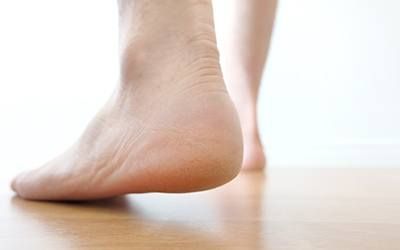
In the early stages, the affected person does not notice any negative symptoms, apart from a decrease in endurance due to discomfort in the lower leg muscles during static exercises or long walks.
Transverse flatfoot is associated with a shortening and widening of the foot (spreading of the metatarsal bones). It occurs most frequently between the ages of 35 and 55, with transverse arch deformities occurring in approximately 57-80 % of cases. Women older than 35 years are more prone to this condition.
degrees of severity
- Grade I includes leg discomfort and pain in the evening or after exercise. The gait changes and the ligaments weaken, but the external changes are hardly noticeable.
- Grade II is characterized by widening or lengthening of the foot, and the patient increasingly feels pain syndrome, even without straining the legs. The pain is localized from the foot to the knee joint. Clubfoot develops gradually and leads to impaired gait.
- In the third stage, there is impairment of the musculoskeletal system and permanent foot deformity. The pain is severe and persistent, making it impossible not only to play sports, but also to stand or walk on your feet for a long time.
- Pain in the feet when walking, standing or running for a long time. Over time, it can cause pain in the lower legs and lower back. In some patients, flat feet cause back pain and headaches.
- Pain, stiffness, heaviness and swelling of the feet and lower legs in the evening.
- Shoes slip quickly. This is especially noticeable when the patient walks in high heels.
- Women experience severe pain when wearing stiletto heels.
- The foot appears to be enlarging. Previously worn shoes may be too small.
- Rapid fatigue of the leg muscles.
- The transverse loosening of the foot is clearly visible from the outside.
- The big toe tilts outwards and a bony 'hump' forms.
- Corns, which are similar to calluses, form on the soles of the toes.
- A hammer toe misalignment occurs.
testimonials
I would like to thank Dr. Thanks to Marina Kimovna Koreshkova: she is a professional in her field, very positive and caring, you feel like she cares about you! I had a herniated disc in my neck and my shoulder was very weak. Marina Kimovna suggested the right treatment for me. Already after the first treatment I felt much better. Nice clinic and caring staff. I would like to thank everyone who was involved in my treatment. I HIGHLY RECOMMEND THIS CLINIC.
Severe arthritis develops quickly. To avoid complications, if you have foot pain, you need to see a doctor. The doctor at the Master's Health Clinic in St. Petersburg will examine your foot and, with a comprehensive examination, will make an accurate diagnosis. Our specialists use the following diagnostic methods:
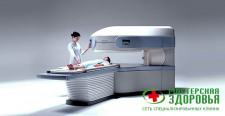
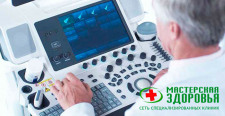
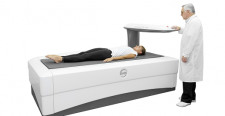
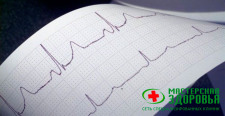




Treatment of longitudinal and transverse flat feet
Since 2003, doctors in the clinics of the Health Workshop in St. Petersburg have been helping to treat flat feet using conservative methods. They eliminate the pain in the foot and stop the progression of the disease.
The course of treatment is individually tailored to the patient. The doctor takes into account the stage and type of the disease, the shape of the foot and the age of the patient. Treatment of flat feet in adults takes a maximum of one and a half months. Our specialists treat with the following procedures:
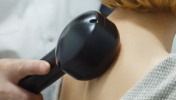
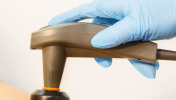
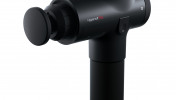
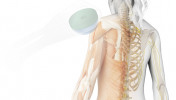
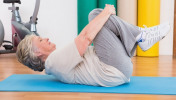
The treatment of longitudinal and transverse flat feet in the 'Health Workshop' eliminates foot pain, strengthens the foot's musculoskeletal system and forms the correct arch.
After the course, the patient receives a training manual with exercises that he can do at home. The doctor will tell you what to do to keep the foot pain from coming back.
Causes of flat feet
The condition is caused by obesity, standing work, and excessive physical stress on the foot from running and jumping. Bad feet can also occur in the opposite situation, when the muscles and ligaments in the foot are weakened by a sedentary lifestyle.
The supporting and musculoskeletal system of the foot
Bone
The foot and the hand have a similar structure. In anatomy, the foot is divided into the following bones:
Tarsal bones (tarsal bones).
Includes 7 bones. The largest are the talus and heel bones. The talus is located between the shins and is more closely related to the ankle. It includes:
tarsus
This is a set of five bones that resemble a tubular shape. This section is medial and is responsible for the function of the fingers and the correct alignment of the arch of the foot. The bones that end in joints lead to the beginning of the fingers.
distal area
There are 14 bones in this area. Each finger has three bones, except for the thumb, which only has two. Between the bony structures are the joints that ensure mobility.
Thanks to this part of the foot, the human body keeps its balance and can move. Interestingly, in the event of a hand loss, the toes have a backup function.
There are joints between the bones. In addition, there are muscles, ligaments, nerves and blood vessels in the foot.
How the bones are arranged
The bones need a closer look as they are the main component of the foot.
The heel bone (calcaneus) is the strongest of the bones.
He is at the rear end and carries a tremendous load. Although this part has nothing to do with the ankle, it plays a big role in distributing pressure. The shape of the heel bone resembles a three-dimensional triangle with a long axis.
The connections between the heel bone and the talus act like a link. A strong connection between these two bones is necessary for the foot to maintain its proper shape. The Achilles tendon is located at the back of the bone. You can tell by the slight bulge. The lower part, on the other hand, provides support when walking on the ground.
Vascular and nervous system of the foot
blood
The shin arteries, located in the front and back, serve to supply blood to the feet. They run along the sole of the foot itself. Smaller connections and vertebrae branch off from these large arteries.
When the foot is injured, one of the vertebrae becomes inoperable, but the remaining vertebrae continue to provide the necessary blood flow to the limb.
The veins in the back are responsible for drainage. They are intertwined and supply blood to the large and small saphenous veins in the lower leg.
Annoy
They are an essential part of the normal functioning of the human foot. You are responsible for the sensation:
Nerve signals sent from the CNS via the calf, ankle, superficial, and tibial nerves reach and are processed in the spinal cord.
The nerves relay signals to the muscles, which are basically reflexes that are either voluntary or involuntary (regardless of human will). The involuntary include the glands (sebaceous and sweat glands) and the tension of the blood vessels.
As far as the skin is concerned, several zones can be distinguished on the foot, which differ in their density, texture and elasticity. For example, the skin on the sole of the foot is dense, while the skin on the heel is thick. Initially, the skin on the hands and feet is the same, but over time and increased stress, additional layers are formed. The instep is smooth and flexible and has nerve endings.
In summary, one can say that nature has created everything in such a way that the foot can withstand enormous loads.
disturbances
Any disorder affects a person's quality of life. They reduce stamina, worsen mood and can cause joint, muscle and headaches.
Particular attention should be paid to children, since foot health is important for the proper development of the child.
Movement disorders and foot malpositions can already be suspected at home. While standing, take a good look at your child's feet from behind.
Healthy feet: While the heel is centered in the axis of the lower extremity, in valgus the heel is lifted outwards and tilts inwards. However, the exact diagnosis can only be made by an orthopedist.
Causes of foot pathology
The causes of this pathology can be diverse. They range from weakness of the musculo-fascial system, rickets, heredity, paralysis to trauma to the bones of the lower limbs.
Aggravating Circumstances – are overweight, ill-fitting footwear and excessive walking barefoot on artificial smooth surfaces.
The orthopedist examines the feet in more detail during a visit with the help of a plantoscope. As soon as the diagnosis has been established, timely advice can be given.
Read more:- Longitudinal and transverse arches of the foot.
- The longitudinal arch of the foot is.
- The longitudinal arches of the foot begin at the bone.
- Structure of the human foot.
- Which ligaments strengthen the transverse arch of the foot?.
- The foot takes on an arched shape.
- The structure of the human foot and diseases.
- Transverse orthopedic insoles.
